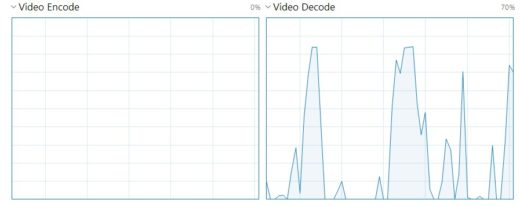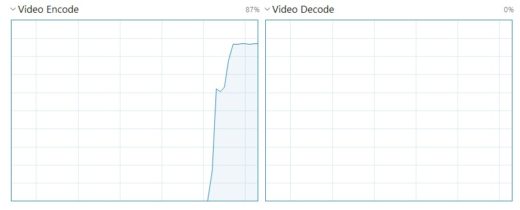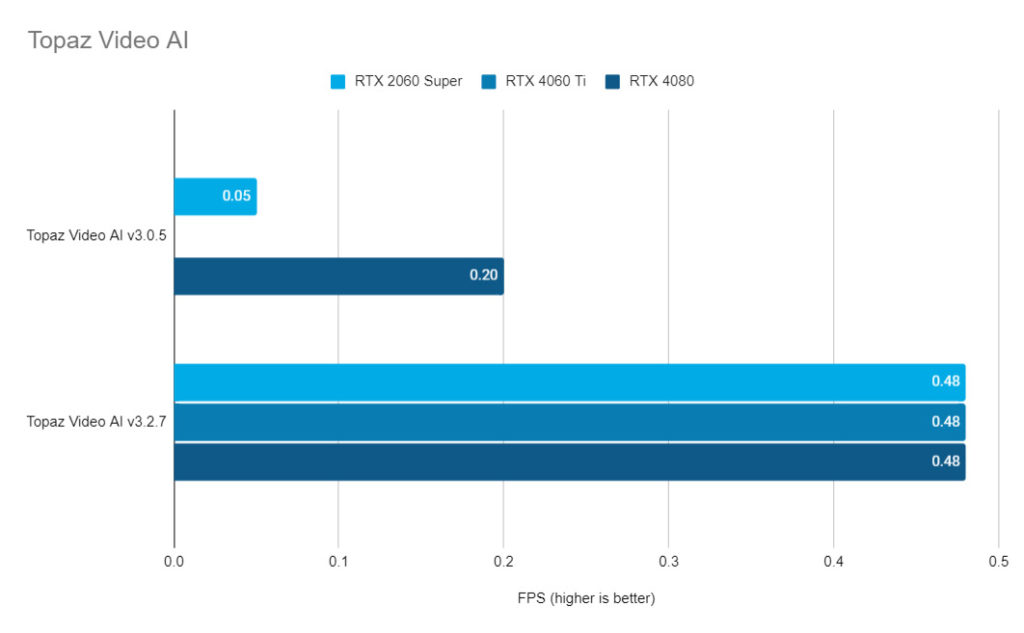You know you’ve truly made it when Nvidia send you a free graphics card for you to review! Well, perhaps not quite, but it’s kind of fun. My views of course remain my own. I happen to own the RTX 4080 (which I’ve reviewed here), but I was happy to run the Nvidia RTX 4060 Ti through the same paces.
There are three new cards from Nvidia and unlike the higher end cards, there are plenty of third party cards from the likes of Asus and Gigabyte at MRSP:
- RTX 4060 $299 / £289 (July)
- RTX 4060 Ti (8GB) $399 / £389 (out now)
- RTX 4060 Ti (16GB) $499 / £479 (July)
Let me give you a TL:DR summary of the RTX 4060 Ti (8GB) version I am reviewing here. This is a great upgrade for you if:
- You have an older card like a 1060 or 960 or older AMD card
- You don’t need more than 8GB VRAM
- You don’t need the extra speed/power of a more expensive card
- You need AV1 encoding

A week of editing
Swapping the 4060 Ti in for my 4080, the first thing I noticed was that the 4060 Ti is much smaller. This is quite welcome, as I can barely shut the case with the 4080 in it. Plus the power usage/cost is much lower too and it means you don’t need as powerful a PSU.

You can read all about the specs if you want, like the increased L2 cache or the reduced memory bus (compared to the 3060 Ti), but the only thing I’m interested in is how it performs in day to day editing tasks.
I used the 4060 Ti for a week of editing in Adobe Premiere Pro. I noticed no difference whatsoever in downgrading from the much more expensive 4080. This is to be expected – these cards are much more powerful than NLEs need in the day to day. In the last few years I’ve used the 2060 Super, the 4060 Ti and the 4080 – all of them gave me the same experience in day to day editing.

The RTX 4060 Ti is more than powerful enough for most editors. As you can see below, unless doing more intensive tasks, it has most of the performance of the much more expensive 4080. It’s a great card, though if your budget is smaller, you could also consider waiting for the 4060 at $100 less or getting a 20 or 30 series card – I see that in Puget’s tests the 3060 Ti outperformed the 4060 Ti in some tests. I don’t recommend going back further than the 20 series because they brought a significant increase in H.264 encoding quality & since then I’ve never bothered with software compression. And I do recommend sticking with Nvidia, they just work that bit better than AMD for editing tasks.
Test 1: Decoding H.264
These tests are slightly different from my last review and the software versions and drivers have advanced, so I tested all three cards again. This test is decoding H.264 (8bit 4:2:0) at 1080p to DNx (could also be ProRes) – which you would do when transcoding or making proxies at the start of a project.

- Specs: Windows 10 Pro, AMD Threadripper 3960X (24 core), 128GB RAM (CL-16 3200MHz), Multiple NVMe SSDs. Avid Media Composer v2023.03, Adobe Premiere Pro v23.4, Davinci Resolve v18.1.2, Topaz Video AI v3.2.7.
- I did the test at 1080p this time as opposed to UHD in my previous article, which is why all the scores are higher, though the patterns are the same.
- Avid continues to rock every thread of my Threadripper, whilst not using the GPU’s decoder at all, which shows that an Avid transcoding machine wants a nice big HEDT processor.
- Premiere continues to not access Nvidia’s hardware decoder (NVDEC) for export (it does use it for playback at least) – this has been true for many months across different versions and drivers. If you have an Intel CPU with Quick Sync you should be fine as Premiere can decode with that.
- There are decent gains to be had in the 40 series over the 20 series, though not much between the 4060 Ti and the 4080.
- Davinci Resolve is able to make the most use of hardware & in a UHD test pulls ahead of Avid by a greater margin.

Test 2: Encoding H.265
This is the opposite test – encoding H.265 from a mezzanine codec. For example you have exported a ProRes master and need to send it for review. This test is at UHD and makes use of what I learned about presets to get the most speed.

- Avid is terrible at encoding – it doesn’t use the GPU, nor use the CPU well. Best to export same as source and then use Shutter Encoder or Resolve.
- Premiere is better, but isn’t making the most of the hardware so gets no gain from the better cards.
- Resolve is able to access the dual encoders in the 4070 Ti, 4080 & 4090 for remarkable speeds, you just have to be using H.265 or AV1, the “Faster” or “Very Fast” preset & be at UHD or above.

For interest I did an H.265 export test for Resolve at 1080p which doesn’t access the dual encoders of the 4080. It still beats the 4060 Ti, but by a lot less. The 2060 Super falls further behind though.

Test 3: Decoding and Encoding H.264 to H.264
This test is for when you have H.264 media on your timeline and export to the same for review. Again I did this one at 1080p so all the figures are higher than last time, though Resolve pulls ahead remarkablty at this resolution.

- Avid’s bad encode is more powerful than its good decode here
- Premiere falls behind Resolve by a much greater margin at 1080p compared to my previous UHD test. I don’t know if it’s Nvidia or Adobe who need to sort this out, but I hope they do. Again, if using an Intel chip with Quick Sync, you’ll probably be getting much better speeds than this.
- Aside from Resolve being impressive, when doing both encoding and decoding, the more expensive cards aren’t really bringing that much. Though at UHD and above the difference is greater.


Test 4: Topaz Video AI
Strangely, with the latest version of Topaz, the card didn’t make any difference at all, though it was much faster across the board since my last test. Realistically this will probably change again with future versions and I expect if you do use Topaz a lot, a 4080 or 4090 will be great to have.

Test 5: Intensive or AI tasks in Davinci Resolve
This is the kind of work where it really pays to have a 4080 or 4090 – things like noise reduction in Resolve or even more an AI based tool like the remarkable Magic Mask.
Other considerations: 8K and VRAM
A good rule of thumb for VRAM is: Resolution +2 is safe, Resolution x2 is better. So for 1080p/2K you are fine with 4GB VRAM. With UHD/4K, 6GB VRAM is usually fine and 8GB is better. If you do use 6K or 8K you might want to wait for and pay the extra $100 for the 4060 Ti (16GB) version that’s coming out in July.
Conclusion
Graphics cards get more and more powerful each year and while the gaming community seem to complain for each and every release, I think for the post production professional, you get a lot of value out of cards such as the 4060 Ti.
However, if you’re a colourist or do graphically intensive tasks or are a Davinci Resolve power user, you can get quite a bit more out of the more expensive cards and probably want more than the 8GB VRAM on offer here.

Filmtools
Filmmakers go-to destination for pre-production, production & post production equipment!
Shop Now














